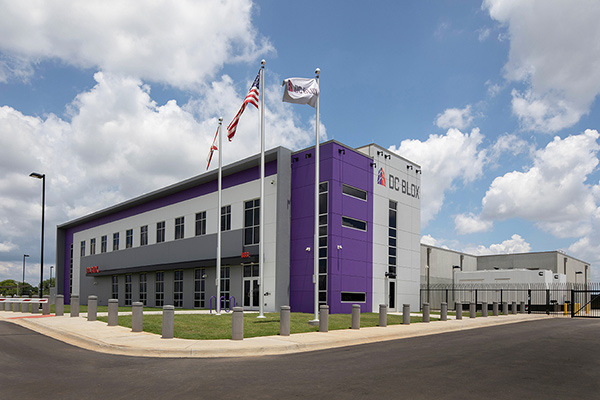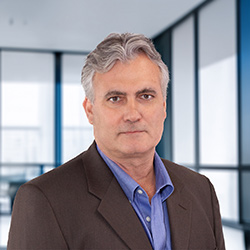Prefabricated concrete is driving data center sustainability and accelerating the path to net zero.

By Mike Ryan, PE, Vice President of Operations, Wells
In today’s climate, there has been a steady rise in awareness and commitment to sustainability in the built environment. That’s particularly true in the booming data center market, where owners are establishing specific goals related to sustainability and net-zero emissions.
According to the International Energy Agency, data centers account for roughly 1–1.5% of global electricity demand, a number expected to rise as artificial intelligence (AI) and cloud services expand. This growth has prompted a greater push for decarbonization across the industry.
While traditional drivers like cost, schedule, speed to market, and quality remain important, the conversation has expanded, with sustainability now playing a bigger role in many decisions.
One area drawing increased attention is embodied carbon, which is the total greenhouse gas (GHG) emissions from building materials and construction, and operational carbon, which measures how the building impacts the environment once it is in use. Embodied carbon can account for up to 50% of a building’s total carbon footprint over its lifecycle, and in sectors like data centers, the extensive structure and infrastructure required to support heavy mechanical and electrical loads can significantly increase that impact. That’s where we’re seeing more sophisticated conversations emerge across the industry, and where we’re best positioned to make an impact.
Embodied carbon includes the energy required to mine raw materials, manufacture them into a product, including transportation, delivery, and installation at the job site. Addressing embodied carbon is often the first step, but achieving net-zero requires a more holistic strategy that aligns design, materials, and long-term performance. For example, while precast concrete can have a higher initial A1–A3 carbon footprint due to cement-intensive manufacturing, its expected lifespan of 100 years or more means that impact is distributed across decades of use, far outlasting many alternative materials and reducing the need for replacement or major maintenance.
The shift toward net-zero isn’t just about environmental stewardship; it’s increasingly a business imperative. Investors and clients are applying Environmental, Social and Governance (ESG) criteria, and jurisdictions across the U.S. are implementing carbon disclosure laws that affect new construction. By aligning design and construction with net-zero goals now, data center developers can future-proof their assets while reducing long-term operating costs.
Early engagement in design decisions is critical for achieving sustainability objectives. In several data center projects, Wells has helped define approaches that align with net-zero goals.
The urgency for these considerations is increasing. Arizton forecasts that U.S. data center construction will reach $112 billion annually by 2030, with sustainability requirements becoming a competitive differentiator in project awards.
Early collaboration ensures that sustainable practices, like using lower-carbon concrete, reducing embodied carbon, controlling waste, recycling building materials, and improving thermal performance, can be implemented effectively. This is all done through:
Each data center project presents unique challenges, from site constraints to aggressive schedules and stringent sustainability targets. Controlling embodied carbon often requires balancing material choices with structural performance and cost. Decisions around building systems, including when and why to use off-site fabrication, play a critical role in this process.
There are instances where precast concrete makes more sense:
Single-level data centers are often constructed in a variety of methods from hybrid (steel frames with insulated precast concrete wall panels) to total precast (architectural and structural precast systems). For multi-level facilities, especially those that require significant floor or rooftop mechanical loads, precast concrete is the better choice. Its ability to handle greater weight and achieve longer spans affordably is a distinct advantage, along with longevity and resilience. And beyond suitability for certain conditions, precast offers built-in performance advantages that directly support data center efficiency and sustainability.
Building Strength: Precast can more readily accommodate suspended loads, thanks to channels and hangers that are cast directly into the structure. That feature alone makes it ideal for supporting rooftop solar or large-scale MEP systems. The increased load capacities of precast are critical for data centers considering solar energy integration as part of their sustainability strategy.
Thermal Options & Performance: Cooling represents nearly 40% of total energy consumption in typical data centers, according to The Department of Energy. From an operational standpoint, the panels help data centers maintain a consistent internal environment more efficiently than alternative materials. With its inherent mass and thermal conductivity, precast doesn’t experience the same temperature swings as metal panels, which reduces the energy required to maintain stable indoor conditions.
Reduced Materials: Because precast performs as a mass wall system, it typically needs far less continuous insulation than other wall assemblies. In many cases, only 2–3 inches of foam is required — significantly less than what a framed wall would demand. High-performance continuous concrete insulation boards are also available, made from closed-cell polyisocyanurate foam produced through environmentally responsible processes. They contain no CFCs, HCFCs, or HFCs, resulting in zero ozone depletion potential (ODP) and negligible global warming potential (GWP).
One area we frequently address early in the process is cement content. Lowering cement usage is one of the most effective ways to reduce embodied carbon in precast concrete. Wells has made significant strides here, optimizing mix development, and incorporating alternative cement blends like Portland Limestone Cement (PLC) or the addition of building code-accepted supplementary cementitious materials (SCMs) like fly ash, slag, and other secondary materials to reduce cement content by around 17% without compromising structural integrity. Future reductions of up to 30% or more are achievable.
Every ton of cement replaced avoids roughly 0.9 tons of CO₂ emissions, according to the U.S. EPA. That means even a 5% reduction in cement content across a large-scale data center can eliminate hundreds of tons of CO₂, depending on project size. These types of solutions allow us to support the client’s sustainability goals while maintaining the performance standards required for mission-critical data centers. These low-carbon material decisions are most effective when backed by data and tracked early in the process, which brings us to the importance of transparency.
Transparency during early project stages is key to reaching sustainability goals. As partners, we prioritize open communication with our suppliers and teams regarding embodied carbon metrics. That transparency allows us to track and meet our clients’ carbon reduction goals with confidence.
During the early stage, we team with design teams to model various scenarios to assess potential impacts. More clients are now formalizing sustainability requirements as part of their specifications, and they expect that information to be readily available for decision-making. Even when it’s not explicitly required, we still request and share that data to ensure alignment with client expectations.
Looking ahead, sustainability will become increasingly important as data center construction accelerates nationwide. As public awareness of environmental impact grows, clients are asking more questions and expecting more detailed answers. And while not every project team has a fully defined sustainability process in place yet, we’re seeing those conversations become more common and more central to the work we do.
Together, we can shape the next generation of data centers — smarter, stronger, and more sustainable.

About the Author:
Mike Ryan, P.E., is Vice President of Operations at Wells, where he oversees daily operations at the company’s architectural and structural manufacturing facilities in Hillsboro, TX. With over 38 years of experience in the construction industry, Mike’s expertise spans both architectural and structural systems. Throughout his career, Mike has held leadership roles in project and product development. He is also a LEED Accredited Professional.
In this episode, I sat down with Beejan Giga, Director | Partner and Caleb Emerson, Senior Results Manager at Carpedia International. We discussed the insights behind their recent Industry Today article, “Thinking Three Moves Ahead” and together we explored how manufacturers can plan more strategically, align with their suppliers, and build the operational discipline needed to support intentional, sustainable growth. It was a conversation packed with practical perspectives on navigating a fast-changing industry landscape.